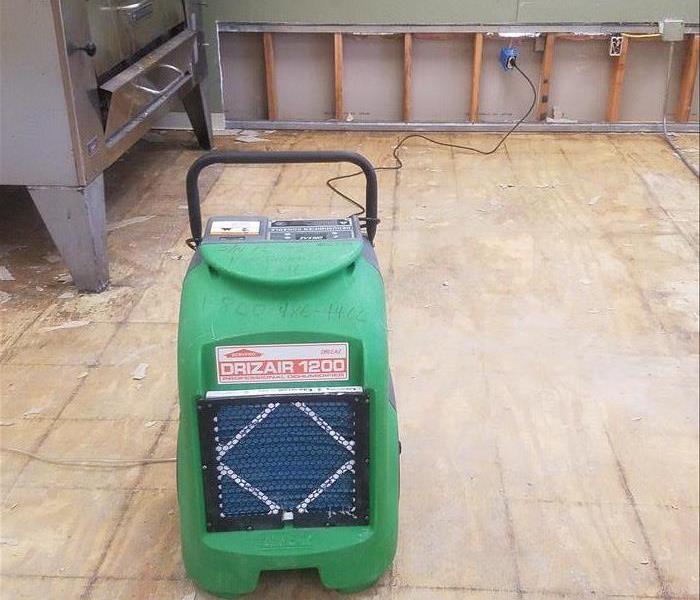How to Prepare for a Flood?
11/28/2017 (Permalink)
Floods are among the most frequent and costly natural disasters. Conditions that cause floods include heavy or steady rain for several hours or days that saturates the ground. Flash floods occur suddenly due to rapidly rising water along a stream or low-lying area.
You will likely hear weather forecasters use these terms when floods are predicted in your community:
- Flood/Flash Flood Watch—Flooding or flash flooding is possible in your area.
- Flood/Flash Flood Warning—Flooding or flash flooding is already occurring or will occur soon in your area.
Prepare
How to Prepare for a Flood
You’ll be better prepared to withstand a flood if you have the following items available – packed and ready to go in case you need to evacuate your home
· · Water—at least a 3-day supply; one gallon per person per day
· Food—at least a 3-day supply of non-perishable, easy-to-prepare food
· Flashlight [Available on the Red Cross Store]
· Battery-powered or hand-crank radio (NOAA Weather Radio, if possible) [Available on the Red Cross Store]
· Extra batteries
· First Aid kit [Available on the Red Cross Store]
· Medications (7-day supply) and medical items (hearing aids with extra batteries, glasses, contact lenses, syringes, cane)
· Multi-purpose tool
· Sanitation and personal hygiene items
· Copies of personal documents (medication list and pertinent medical information, deed/lease to home, birth certificates, insurance policies)
· Cell phone with chargers
· Family and emergency contact information
· Extra cash
· Emergency blanket
· Map(s) of the area
· Baby supplies (bottles, formula, baby food, diapers)
· Pet supplies (collar, leash, ID, food, carrier, bowl)
· Tools/supplies for securing your home
· Extra set of car keys and house keys
· Extra clothing, hat and sturdy shoes
· Rain gear
· Insect repellent and sunscreen
· Camera for photos of damage
Respond
Responding Appropriately During a Flood
· Listen to area radio and television stations and a NOAA Weather Radio for possible flood warnings and reports of flooding in progress or other critical information from the National Weather Service (NWS)
· Be prepared to evacuate at a moment’s notice.
· When a flood or flash flood warning is issued for your area, head for higher ground and stay there.
· Stay away from floodwaters. If you come upon a flowing stream where water is above your ankles, stop, turn around and go another way. Six inches of swiftly moving water can sweep you off of your feet.
· If you come upon a flooded road while driving, turn around and go another way. If you are caught on a flooded road and waters are rising rapidly around you, get out of the car quickly and move to higher ground. Most cars can be swept away by less than two feet of moving water.
· Keep children out of the water. They are curious and often lack judgment about running water or contaminated water.
· Be especially cautious at night when it is harder to recognize flood danger.
· Because standard homeowner’s insurance doesn’t cover flooding, it’s important to have protection from the floods associated with hurricanes, tropical storms, heavy rains and other conditions that impact the U.S. For more flood safety tips and information on flood insurance, please visit the National Flood Insurance Program Web site at www.FloodSmart.gov.
Recover
Flood Recovery Tips
· Return home only when officials have declared the area safe.
· Before entering your home, look outside for loose power lines, damaged gas lines, foundation cracks or other damage.
· Parts of your home may be collapsed or damaged. Approach entrances carefully. See if porch roofs and overhangs have all their supports.
· Watch out for wild animals, especially poisonous snakes that may have come into your home with the floodwater.
· If you smell natural or propane gas or hear a hissing noise, leave immediately and call the fire department.
· If power lines are down outside your home, do not step in puddles or standing water.
· Keep children and pets away from hazardous sites and floodwater.
· Materials such as cleaning products, paint, batteries, contaminated fuel and damaged fuel containers are hazardous. Check with local authorities for assistance with disposal to avoid risk.
· During cleanup, wear protective clothing, including rubber gloves and rubber boots.
· Make sure your food and water are safe. Discard items that have come in contact with floodwater, including canned goods, water bottles, plastic utensils and baby bottle nipples. When in doubt, throw it out!
· Contact your local or state public health department to see if your water supply might be contaminated. You may need to boil or treat it before use. Do not use water that could be contaminated to wash dishes, brush teeth, prepare food, wash hands, make ice or make baby formula!
Let Your Family Know You're Safe
If your community has experienced a disaster, register on the American Red Cross Safe and Well web site to let your family and friends know about your welfare. You may also call 1-866-GET-INFO to register yourself and your family.
http://www.redcross.org/get-help/prepare-for-emergencies/types-of-emergencies/flood#/Recover






 24/7 Emergency Service
24/7 Emergency Service
